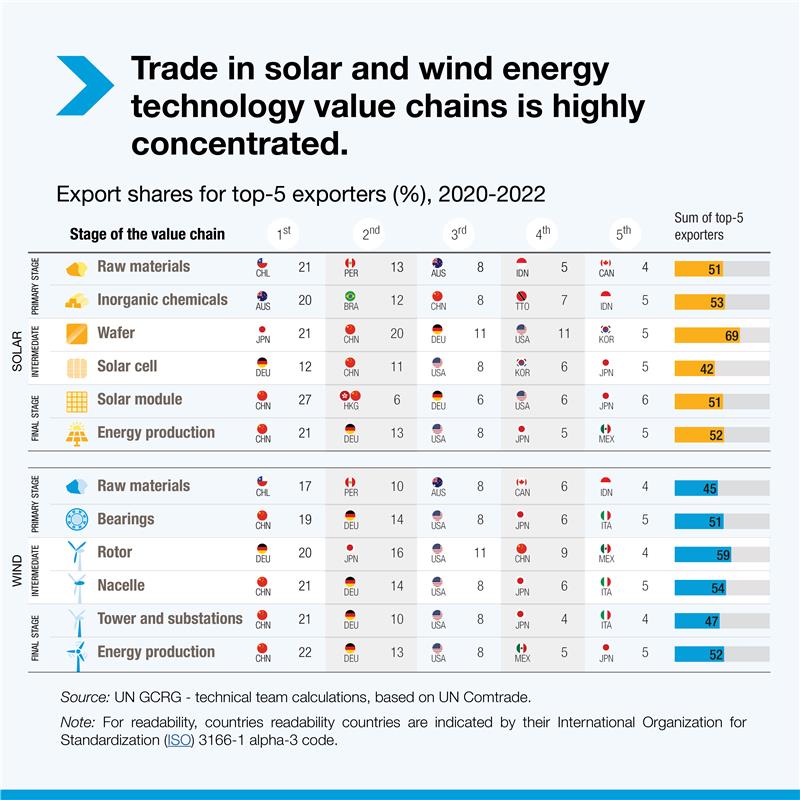Cutting CO2 emissions while building a sustainable future requires urgent and decisive action to separate economic prosperity and energy access from CO2 emissions.
For much of modern history, economic output and carbon dioxide (CO2) emissions have been tightly linked. It was not until the 1980s that developed countries began to “bend the curve” – reducing their per capita CO2 emissions while maintaining or even growing their economies.
However, developed countries’ per capita CO2 emissions remain more than twice as high as those in the developing world. Emissions are mainly generated by developed and middle-income developing countries.
Poorer economies contribute little to the global total – for example, least developed countries account for less than 4% – yet face greater risks from climate change and related disasters.
The curve is not bending fast enough.
Renewable energy has the power to combat climate change while alleviating energy poverty
Expanding countries’ capacities to produce renewable energy reduces their dependence on fossil fuels and can significantly lower CO2 emissions. Additionally, renewable energy technologies and their off-grid and mini-grid solutions could bring power to millions of people living without electricity – a key enabler of development and economic growth.
Unfortunately, progress towards renewable energy access and Sustainable Development Goal (SDG) 7 has stalled for the first time in over a decade. In 2022, 685 million people still lacked access to electricity, even though the vast majority of them live in areas with abundant renewable energy resources.
Renewable energy technologies should not follow traditional trade patterns
Between 2020 and 2022, the top five exporters of products used in solar and wind energy value chains supplied 40% of global exports. This concentration is particularly high for intermediate goods, such as polysilicon wafers for solar cells and wind turbine rotors, whose production is highly energy and capital-intensive.
Meanwhile, most developing countries are slipping into historical trade patterns. While China has emerged as a leading producer and exporter of renewable energy technologies, most developing countries remain net exporters of raw materials. However, they are net importers of manufactured goods for solar and wind energy technologies missing out on valuable opportunities for sustainable industrialization.
High trade policy costs limit the opportunities for developing countries
UN Trade and Development’s (UNCTAD) Powering Trade report shows that current trade policies are often inconsistent with the global goals for the energy transition, universal energy access and sustainable development.
Particularly for developing countries, setting the right trade policy is a delicate balancing act, as tariffs are also an important revenue source. Average tariffs on goods used to produce solar and wind energy technologies range from 2.5% in Asia and Oceania to 7.1% in Africa, with non-tariff measures further increasing trade costs.
The report highlights the potential to strengthen regional integration in the global South by tackling tariffs and non-tariff measures. Reducing intra-regional tariffs and compliance costs associated with non-tariff measures could enable economies of scale, promote investment and enhance South-South trade. Lowering import costs for intermediate goods would also help developing countries enter solar and wind energy value chains at the assembly stage.
Bend the curve towards thriving, carbon-neutral economies
Reversing the trajectory of CO2 emissions and building a sustainable future requires urgent and decisive action to separate economic prosperity and energy access from CO2 emissions. Embracing renewable energy as the cornerstone for increasing the access to and affordability of energy, investing in diversified value chains and reforming trade policies to empower developing countries are essential steps.
Fine-tuning trade policies to reflect the realities of the climate emergency can unlock the full potential of renewable energy, driving sustainable and inclusive growth.

